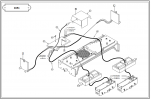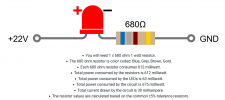viaEstrecha
Spanish metre gauge in G scale (on the cheap)
I have an extremely ancient but loveable LGB 2051, secondhand and probably 30 years old, which is a beautiful runner, but the previous owner disconnected and mostly removed all the original lighting and so it quite literally has no lights, just some taped up wires! I would like red/white bi-directional LED lighting and possibly a cab light and so would welcome any suggestion as to how I would go about it. I'm strictly DC track-powered operation and accept the limitation that it all goes dark when the loco is stationary! I'm a dummy when it comes to electronics, so the solution has to be idiot-proof, preferably just involving attaching some self-contained LEDs without resistors and capacitors and other pieces of devil-magic, if possible. Attached the wiring diagram as-is, except that items 83, I and L are missing, with just the old wires to them from the basic circuit board remaining.




